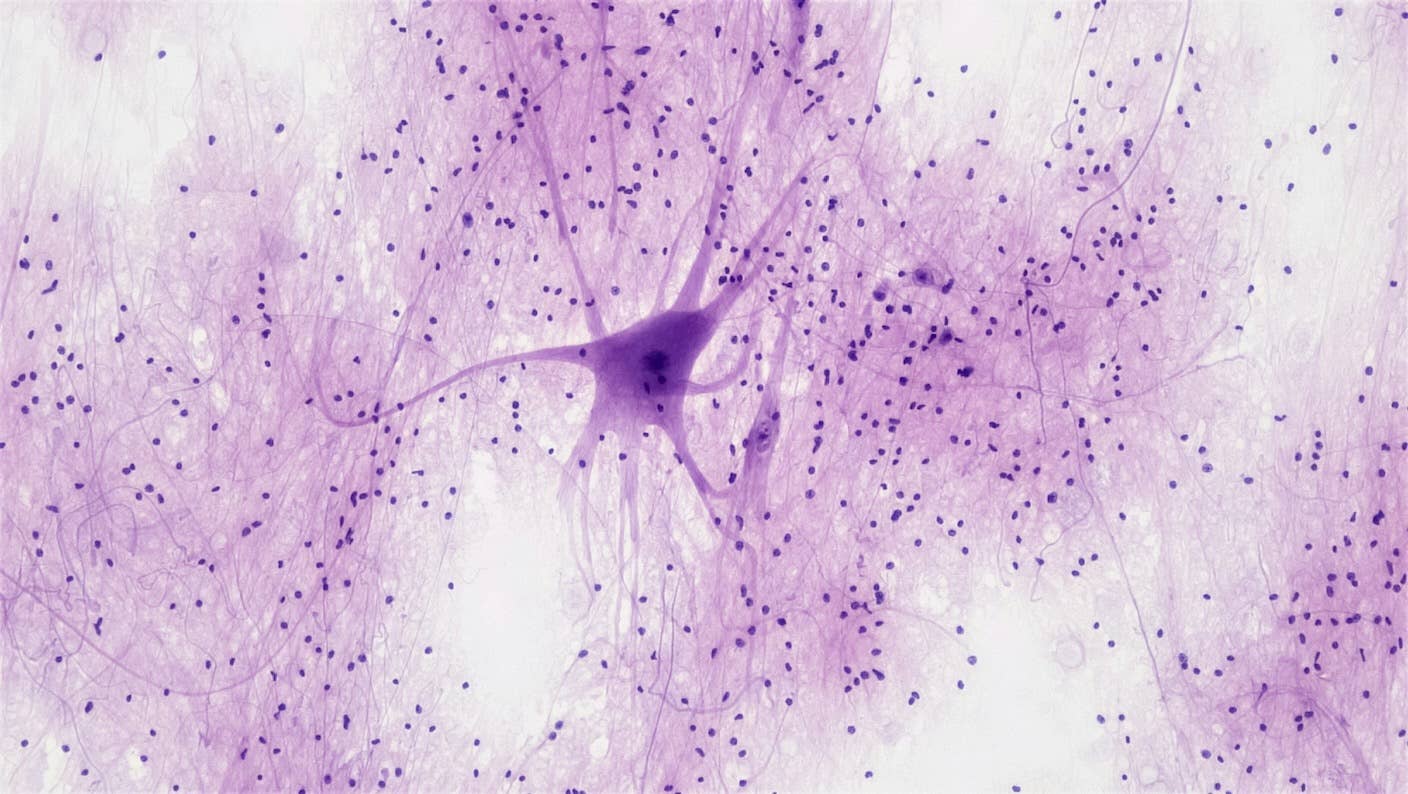5 Incredible Ways Scientists Are Merging Our Brains With Machines

Share
I've been reading Ramez Naam's fantastic book "Nexus," which is set in a near-future where a powerful nano-drug allows human minds to connect together. In the story, a group of enterprising neuroscientists and engineers discover they can use the drug in a new way — to run a computer operating system inside their brains. Naam's characters telepathically communicate with each other using a mental chat app and even manipulate other people's bodies by gaining control of their brains' operating systems.
Sounds far-fetched, right?
It might not be as far-fetched as you think. From connecting a human brain to a basic tablet to help a paralyzed patient communicate with the outside world to memory-boosting brain implants and a prototype computer chip that runs on live neurons — the real world progress we're seeing today is nearly as strange as fiction.
Below are five stories we've published over the past year tracking the wild experiments and ideas of researchers pushing the boundaries of how human brains interact with machines.
Scientists Connect Brain to a Basic Tablet—Paralyzed Patient Googles With Ease
By Shelly Fan
"For patient T6, 2014 was a happy year. That was the year she learned to control a Nexus tablet with her brain waves, and literally took her life quality from 1980s DOS to modern era Android OS.
A brunette lady in her early 50s, patient T6 suffers from amyotrophic lateral sclerosis (also known as Lou Gehrig’s disease), which causes progressive motor neuron damage. Mostly paralyzed from the neck down, T6 retains her sharp wit, love for red lipstick and miraculous green thumb. What she didn’t have, until recently, was the ability to communicate with the outside world.”
This Amazing Computer Chip Is Made of Live Brain Cells
By Sveta McShane
"What if we could harness the power of the human brain by using actual brain cells to power the next generation of computers? As crazy as it sounds, that’s exactly what neuroscientist Osh Agabi is building. Koniku, Agabi’s startup, has developed a prototype 64-neuron silicon chip.
Agabi believes that harnessing the power and efficiency of the human brain is the future of computing. 'There are no practical limits to how large we can make our devices or how much we can engineer our neurons. I believe as intelligent computation goes—biology is the ultimate frontier.' "
First Human Tests of Memory Boosting Brain Implant—a Big Leap Forward
By Shelly Fan
Be Part of the Future
Sign up to receive top stories about groundbreaking technologies and visionary thinkers from SingularityHub.


“Memory loss seems to be inescapable. But one maverick neuroscientist is working hard on an electronic cure. Funded by DARPA, Dr. Theodore Berger, a biomedical engineer at the University of Southern California, is testing a memory-boosting implant that mimics the kind of signal processing that occurs when neurons are laying down new long-term memories. The revolutionary implant, already shown to help memory encoding in rats and monkeys, is now being tested in human patients with epilepsy — an exciting first that may blow the field of memory prosthetics wide open.”
Hacking the Brain — Restoring Lost Abilities With the Latest Neurotechnologies
By Peter Diamandis
"...Our experience of reality is constrained by our biology. This doesn't have to be the case anymore as we develop new ways to send novel inputs or computational capabilities into the brain. We could add new senses. (Imagine being able to "plug in" to the stock market, to sense how the market was doing.) We could develop wireless, brain-to-brain communication, something called synthetic telepathy, and send messages to each other by thinking them. Our brains are a platform and the opportunities for new applications are almost endless."
Ray Kurzweil’s Wildest Prediction: Nanobots Will Plug Our Brains Into the Web by the 2030s
By Peter Diamandis
"In the 2030s," said Ray, "we are going to send nano-robots into the brain (via capillaries) that will provide full-immersion virtual reality from within the nervous system and will connect our neocortex to the cloud. Just like how we can wirelessly expand the power of our smartphones 10,000-fold in the cloud today, we'll be able to expand our neocortex in the cloud."
Let's digest that for a moment. 2030 is only 15 years away…Directly plugging your brain into the internet? Upgrading your intelligence and memory capacity by orders of magnitude?”
Image Credit: Shutterstock
Sveta writes about the intersection of biology and technology (and occasionally other things). She also enjoys long walks on the beach, being underwater and climbing rocks. You can follow her @svm118.
Related Articles

In Wild Experiment, Surgeon Uses Robot to Remove Blood Clot in Brain 4,000 Miles Away

A Squishy New Robotic ‘Eye’ Automatically Focuses Like Our Own

This Crawling Robot Is Made With Living Brain and Muscle Cells
What we’re reading